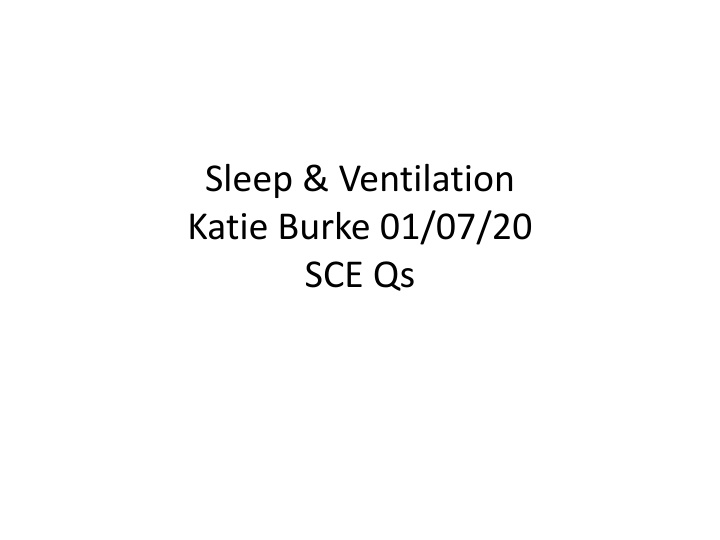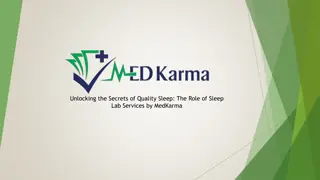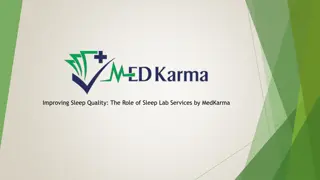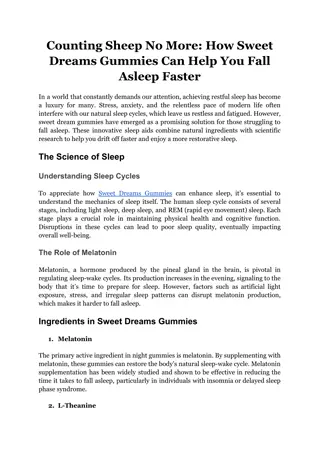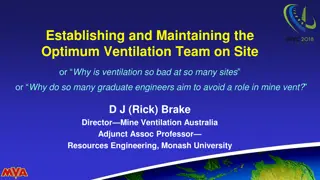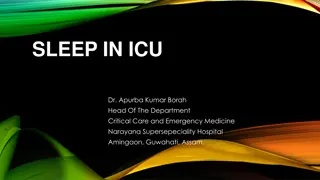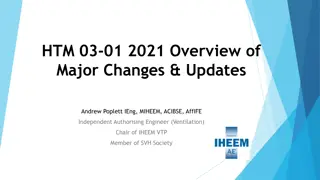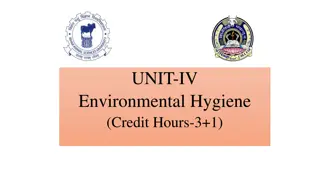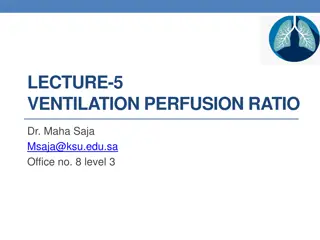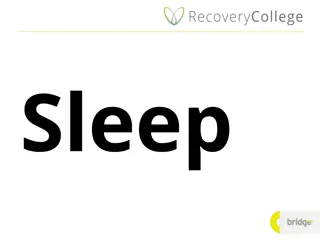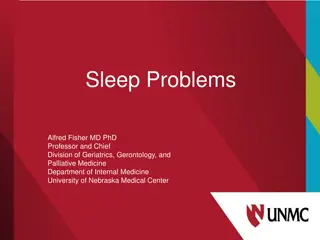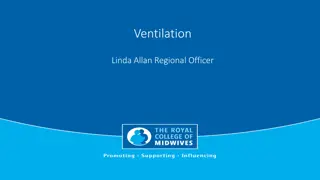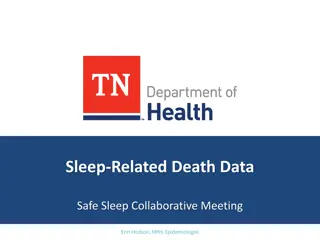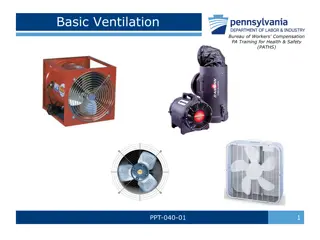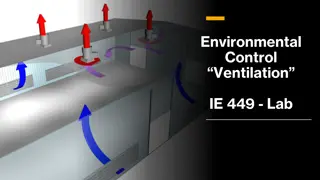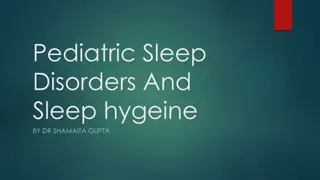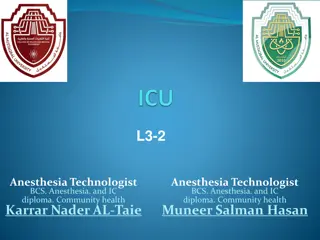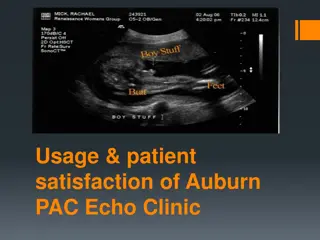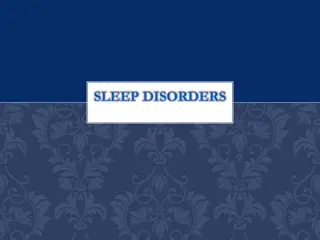Sleep & Ventilation in Sleep Clinic: Advice on Driving & Management
A series of clinical scenarios in sleep medicine involving patients with sleepiness, snoring, and breathlessness. Learn about advising patients on driving restrictions, management options for snoring and sleep apnea, and interpreting lung function testing results.
Download Presentation

Please find below an Image/Link to download the presentation.
The content on the website is provided AS IS for your information and personal use only. It may not be sold, licensed, or shared on other websites without obtaining consent from the author.If you encounter any issues during the download, it is possible that the publisher has removed the file from their server.
You are allowed to download the files provided on this website for personal or commercial use, subject to the condition that they are used lawfully. All files are the property of their respective owners.
The content on the website is provided AS IS for your information and personal use only. It may not be sold, licensed, or shared on other websites without obtaining consent from the author.
E N D
Presentation Transcript
Sleep & Ventilation Katie Burke 01/07/20 SCE Qs
Question 1. You see a 60 year old male new referral in sleep clinic. He reports issues with sleepiness for at least a year. PMH: Hypertension & poorly controlled T2DM. His wife reports increased snoring and pauses in his breathing. He wakes feeling unrefreshed and often naps during the day. He has fallen asleep at work and once at the wheel whilst stopped at traffic lights. His ESS is 18, BMI 36. What should you advise regarding driving whilst he is awaiting investigations? A. He can continue to drive and does not need to inform the DVLA B. He should stop driving but does not need to inform the DVLA at present C. He should stop driving and he should contact the DVLA himself as soon as possible D. He should stop driving and you, the physician, should contact the DVLA E. If investigations confirm OSA he will not be able to drive again
DVLA & OSA Anyone with excessive sleepiness (of any cause) having, or likely to have, an adverse effect on driving should not drive A patient with excessive sleepiness who is diagnosed with OSA (at least moderate) should not drive and must inform the DVLA It is the physician s responsibility to inform the patient of requirements but the patient s responsibility to contact DVLA where relevant A patient diagnosed with OSA who does not have sleepiness, can drive and does not need to inform the DVLA
Question 2. You review a 40 year old woman with severe snoring. Her husband has noticed a few episodes of pauses in her breathing when asleep. She has no past medical history or regular medication. Her BMI is 38, mallampati 4, ESS is 6. She undergoes PSG which shows snoring ++, AHI 5/hr, TS <90% of 22% What is the most appropriate next step in management? A. Weight loss advice and mandibular advancement device B. Start CPAP C. Start BiPAP D. Refer to ENT for uvulopalatopharyngoplasty E. Start nocturnal oxygen
Question 3. A 45 year old active man presents with 3 months of breathlessness which he has noticed is worse when swimming or in the bath. He also occasionally wakes with breathlessness during the night which eases after getting up His spirometry shows: FEV1 1.4L (67%), FVC 1.8L (65%) What else would you expect to find on his lung function testing? A. Reduced MEP B. Reduced KCO C. Reduced supine vital capacity D. Normal MIP E. No other abnormality
Question 4. You see a 65 year old male in clinic with breathlessness. He is an ex-plumber and has a 25 pack year smoking history. He is on MTX for psoriasis. You notice his breathlessness markedly reduces when you lie him down to examine him. His sats also increase Which of the following is the most likely underlying diagnosis? A. Atrial septal defect B. Langerhan s cell histiocytosis C. Malignant pleural effusion D. COPD E. Drug-induced fibrosis
Platypnoea: SOB improves when supine Orthodeoxia: Improved SpO2 when supine ASD AVM Hepato-pulmonary Autonomic failure Lower lobe predominant disease e.g. alpha-1- antitrypsin
Question 5. A 52 year old lady has had troublesome restless legs for many years which have now become much worse. She has a history of hypertension, gastric ulcer, type 2 diabetes and previous alcohol addiction but has been abstinent for 3 years Which potential RLS treatment should you avoid prescribing? A. IV iron B. Ropinirole C. Gabapentin D. Codeine E. Pregabalin
Question 6. You review the sleep study of a 60year old lady who has presented with daytime somnolence. What is the best interpretation of her study? A. OSA B. Nocturnal hypoventilation C. Circadian rhythm disorder D. Upper airways resistance syndrome E. Cheyne-Stokes respiration
Question 7. You review the sleep study of a 50 year old man who is a smoker, has chronic back pain and BMI 40 who complains of sleepiness and morning headaches. AHI 28, some snore, TS <90% = 50%. His CXR is normal. ABG shows pH 7.36, CO2 6.9, HCO3- 30 Which is the best next step in management: A. Start BIPAP B. Start nocturnal oxygen C. Start CPAP D. Weight loss advice E. Wean off opiates
Question 8. As the on call med reg you admit a 56 year old lady with AKI following a recent diarrhoeal illness. She has hypertension and history of previous STEMI, she weighs 70kg. You note leg weakness and slight slurring of speech. You check her bedside spirometry and find FVC 0.95L What is the best next step? A. Perform ABG and commence BIPAP if T2RF B. Refer to ITU for consideration of intubation C. Start CPAP D. CT head to asses for cerebrovascular event E. Monitor on AMU with continuous SpO2 and 4 hourly FVC
